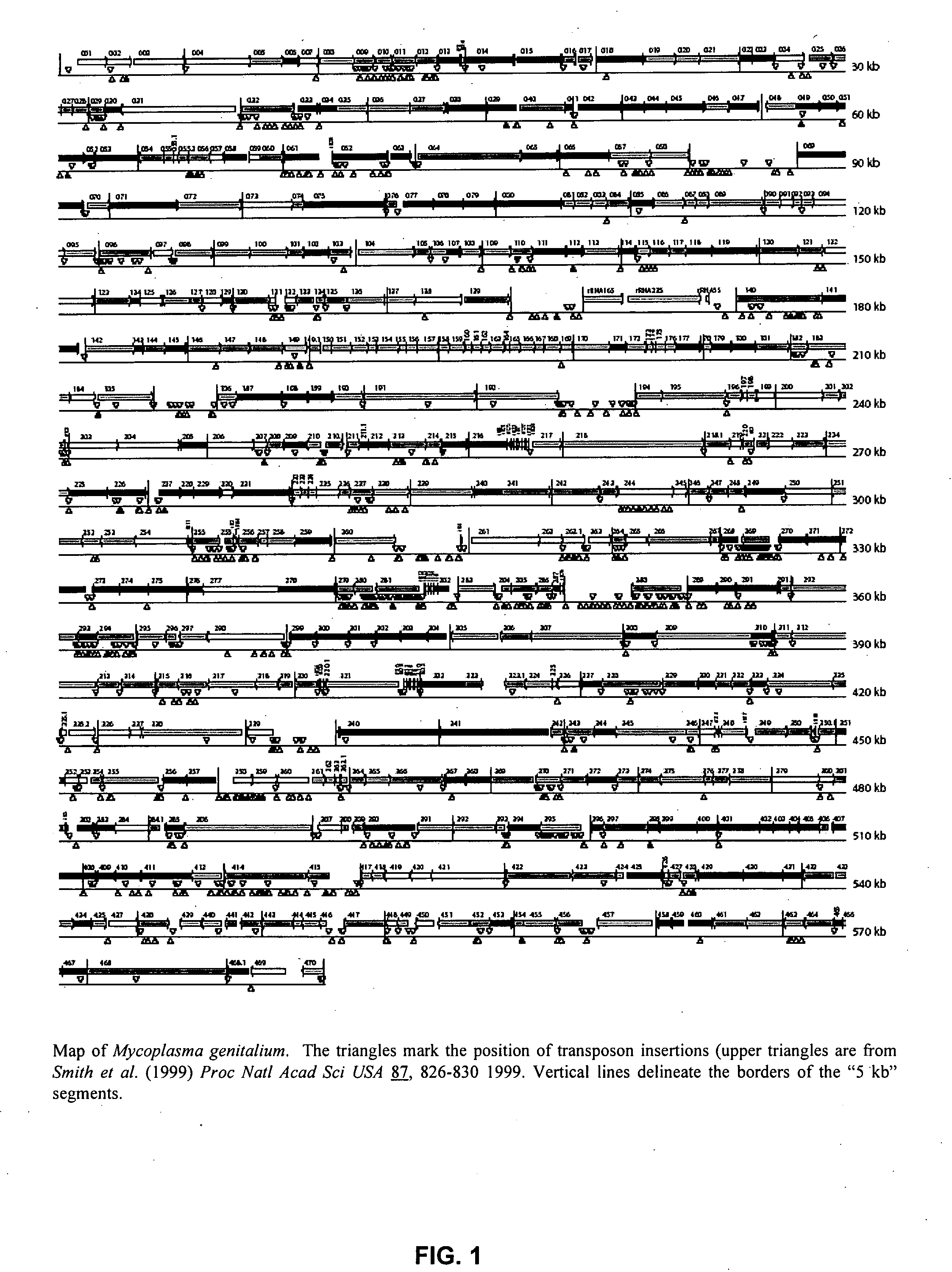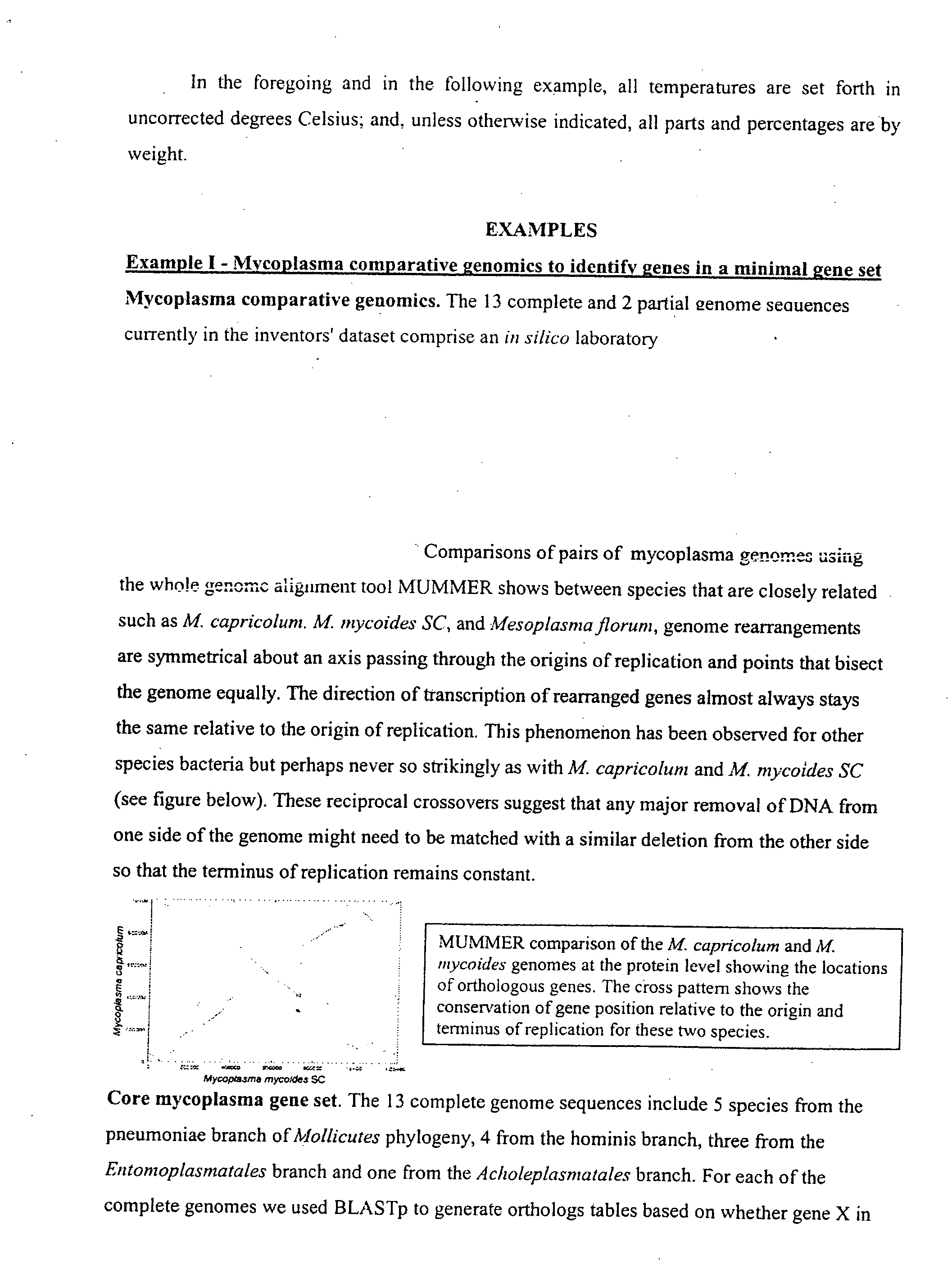Synthetic genomes
a genome and synthetic technology, applied in the field of molecular biology, can solve the problems of limited conventional genetic engineering techniques that allow manipulation of existing sequences, and achieve the effect of complementing or facilitating the ability of the genom
- Summary
- Abstract
- Description
- Claims
- Application Information
AI Technical Summary
Benefits of technology
Problems solved by technology
Method used
Image
Examples
example ii
[0038] Example II describes the generation of a synthetic mouse mitochondrial genome of 16.3 kb by the assembly of three cassettes. Example II shows the design of 682 48-mer oligonucleotides, and the assembly of those oligonucleotides into three overlapping segments (cassettes). The oligonucleotides are then assembled into cassettes, by such methods as the method described in Smith et al. (2003), supra, modified in order to reduce heat damage to the synthetic DNA.
[0039] According to one method, once a cassette is assembled, its sequence may be verified. It is usually desirable to remove errors which have arisen during the preparation of the cassettes, e.g., during the synthesis or assembly of the nucleic acid components. Among the error correction methods which may be used are; (1) methods to modify, tag and / or separate mismatched nucleotides so that amplification errors may be prevented; (2) methods of global error correction, using enzymes to recognize and cleave mismatches in DNA...
PUM
| Property | Measurement | Unit |
|---|---|---|
| Length | aaaaa | aaaaa |
| Energy | aaaaa | aaaaa |
Abstract
Description
Claims
Application Information
 Login to View More
Login to View More - R&D
- Intellectual Property
- Life Sciences
- Materials
- Tech Scout
- Unparalleled Data Quality
- Higher Quality Content
- 60% Fewer Hallucinations
Browse by: Latest US Patents, China's latest patents, Technical Efficacy Thesaurus, Application Domain, Technology Topic, Popular Technical Reports.
© 2025 PatSnap. All rights reserved.Legal|Privacy policy|Modern Slavery Act Transparency Statement|Sitemap|About US| Contact US: help@patsnap.com



